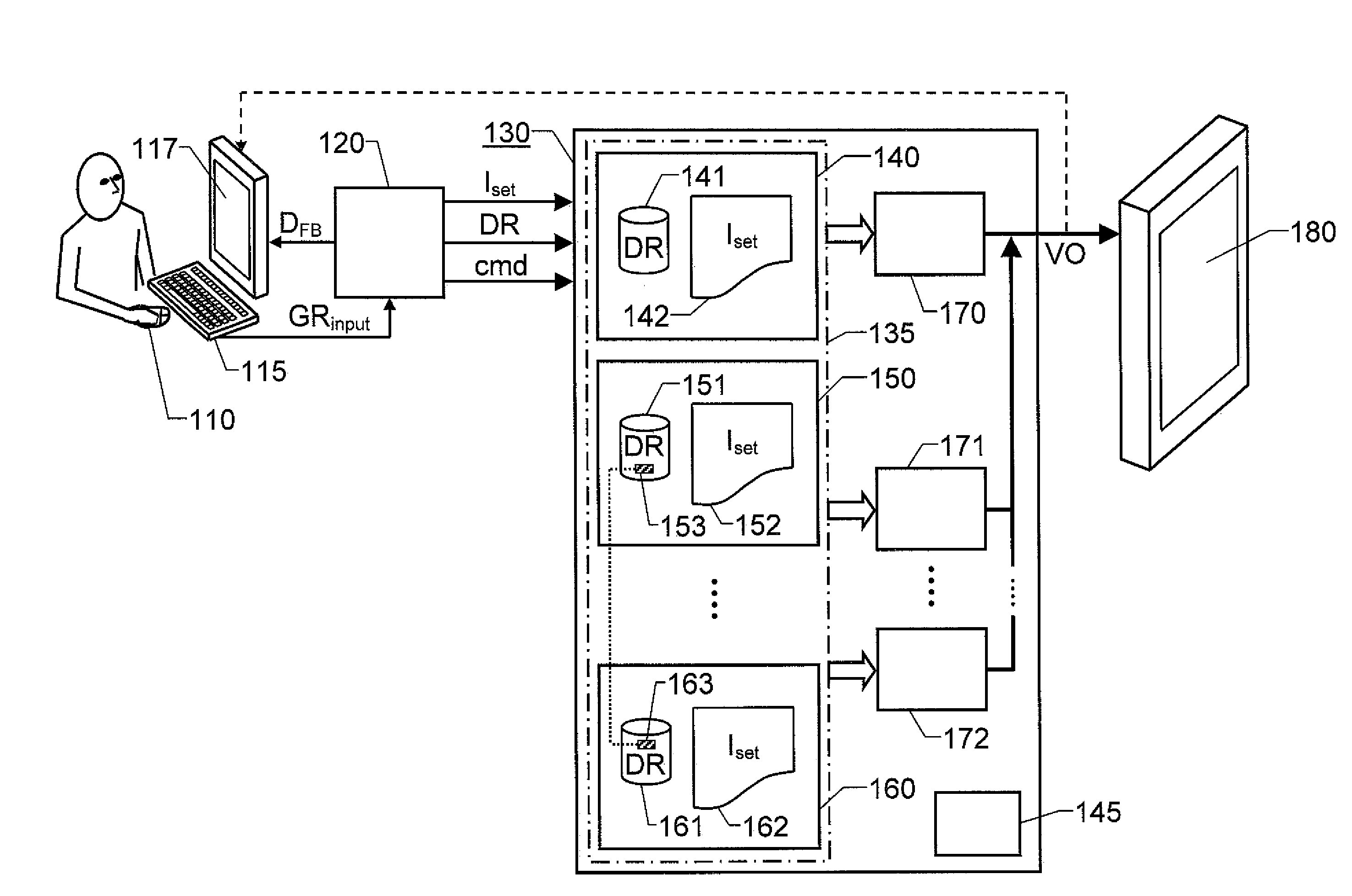Graphics rendering system
a graphics and rendering system technology, applied in the field of computer graphics, can solve the problems of specifying a rendering order, a low degree of user control over the final onscreen, and the user cannot create graphics with a specified rendering order
- Summary
- Abstract
- Description
- Claims
- Application Information
AI Technical Summary
Benefits of technology
Problems solved by technology
Method used
Image
Examples
first embodiment
[0047]FIG. 2a illustrates a client- and server-module configuration according to the invention, wherein the client module 120 and the server module 130 are implemented in a common data-processing apparatus 210, e.g. a work station, a personal computer, a laptop, PDA, a smartphone or a mobile telephone. This implementation is suitable for a single-user environment.
second embodiment
[0048]FIG. 2b illustrates a client- and server-module configuration according to the invention. Here, the client module 120 is implemented in a first data-processing apparatus 220 and the server module 130 is implemented in second data-processing apparatuses 230a, 230b and 230c respectively. Alternatively, two or more of the data-processing apparatuses 230a, 230b and 230c may be represented by different processor cores of a single apparatus. In any case, the client module 120 is adapted to transfer a first set of data resources DR1 and a first instruction set Iset1 to a first server module 130a implemented in a primary data-processing apparatus 230a to produce a first visual output VO1; transfer a second set of data resources DR2 and a second instruction set Iset2 to a second server module 130b implemented in a secondary data-processing apparatus 230b to produce a second visual output VO2; and transfer a third set of data resources DR3 and a third instruction set Iset3 to a server m...
third embodiment
[0049]FIG. 2c illustrates a client- and server-module configuration according to the invention. Here, a number of client modules 120a, 120b and 120c are implemented in a respective data-processing apparatus 250a, 250b and 250c. Each client module 120a, 120b and 120c is adapted to transfer data resources DRa, DRb and DRc respectively and instructions Iseta, Isetb and Isetc respectively to a data-processing apparatus 260 implementing a common server module 130. This embodiment is desirable when a plurality of users shall cooperate to create a graphics environment in a comparatively powerful data-processing apparatus. The different data resources DRa, DRb and DRc respectively and instructions Iseta, Isetb and Isetc may either a common scene or different scenes in the graphics environment.
[0050]Naturally, according to the invention, various forms of combinations, or hybrids, between the embodiments described above with reference to FIGS. 2a, 2b and 2c are conceivable. For example, the p...
PUM
 Login to View More
Login to View More Abstract
Description
Claims
Application Information
 Login to View More
Login to View More - R&D
- Intellectual Property
- Life Sciences
- Materials
- Tech Scout
- Unparalleled Data Quality
- Higher Quality Content
- 60% Fewer Hallucinations
Browse by: Latest US Patents, China's latest patents, Technical Efficacy Thesaurus, Application Domain, Technology Topic, Popular Technical Reports.
© 2025 PatSnap. All rights reserved.Legal|Privacy policy|Modern Slavery Act Transparency Statement|Sitemap|About US| Contact US: help@patsnap.com



